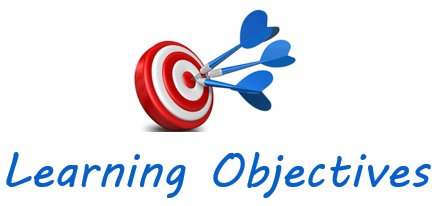I had been struggling with how to present the topic of learning objectives… actually I’d been actively avoiding it for weeks. The house sparkled, professional articles were read, novels finished, gardens weeded, family vacations planned, family and friends visited, desk cleared, new to-do-list begun… You get the idea.
I wrote and deleted at least five versions of this blog. They were too dry, too dense, too didactic, too unreadable. It just wasn’t working. Then I got some wonderful advice. Where was my opening? What was the connection between the academic topic of ‘objectives’ and real life?
One last time, I took a break. This time it was to go into the kitchen and bake cookies. I implemented quality control protocols by sampling one (maybe two) to make sure that the taste and texture was acceptable. They were perfect! That’s when I had my “aha” moment. Objectives are like recipes. If you follow them precisely, you should get the desired result. If you don’t – unless you have a degree in organic chemistry – there is no predicting how the product will look or what it will taste like.
Building out the analogy: the recipe book is the curriculum. The desert section is the goal or competency. The specific peanut butter/oatmeal cookie recipe on page 73 is the objective. Once I had this realization, the blog almost wrote itself.
So, let’s do a quick review: Curriculum presents the ‘big ideas’ and main concepts (a la Julia Child: The Way to Cook). Within curriculum there are goals and objectives. Goals identify broad, long term achievements. In The Way to Cook, there are chapters on Soups, Breads, Eggs, Fin Fish and Shellfish, etc. Within goals are objectives. Objectives describe explicit, more immediate outcomes relevant to the goal that the learner is expected to accomplish. Within the chapter on Cakes and Cookies, there is a wonderful recipe for Orange-Almond Sponge Cake Batter. There will likely be multiple objectives under any single goal. There are multiple cake recipes in the Cake and Cookies chapter.
The University of Colorado-Denver wrote the following about learning objectives in their faculty resource reference:
“The philosopher Seneca once said, ‘If one does not know to which port one is sailing, no wind is favorable.’ When you know where you are headed, you can more easily get there. Well-defined and articulated learning objectives are important because they:
- provide students with a clear purpose to focus their learning efforts
- direct your choice of instructional activities
- guide your assessment strategies.”
The University of New Mexico School of Medicine writes: “A learning objective is an outcome statement that captures specifically what knowledge, skills, and attitudes learners should be able to exhibit following instruction”. They note that a common misconception is to think that the objective describes instructor activity. Objectives are statements about what the learner needs to do – not about what the instructor will do. Check out UNM’s superb pdf for further information about objectives and how to write them.

When writing objectives, remember the acronym SMART. Objectives are most useful when they are Specific, Measurable, Actionable, Relevant, and Time-bound (some say Targeted to the the learner). While there may be minor differences in how the letters of SMART are defined, there is consistent agreement that learning objectives should be specific, measurable/observable, actionable or attainable within a specific time frame, relevant, and targeted.
Beautifully constructed examples of objectives for a 4-week Women’s Health rotation are provided by the leadership team of Reproductive Health in Nursing (rhnursing.org). The CDC and the National Academies advocate the use of written SMART objectives to guide training delivery, learner assessment and program evaluation. Both the CDC and the National Academies of Medicine have created useful, practical guidelines for writing SMART objectives.
Finally, there is the classic three-step approach to writing performance-based learning objectives by Robert Mager: Preparing Instructional Objectives, latest revision in 1997. For a very readable and contemporary overview check out Jeffrey Dalto’s November 2014 blog: Robert Mager’s Performance-Based Learning Objectives.
This concludes the series on Standard 2 – Curriculum. Next time we will move on to Standard 3 — Evaluation.
Wrapping up – written objectives turn curricular goals into actuality. As Antoine de Sainte Exupery wrote: “A goal without a plan is just a wish.” Learning objectives can make curricular wishes come true.


